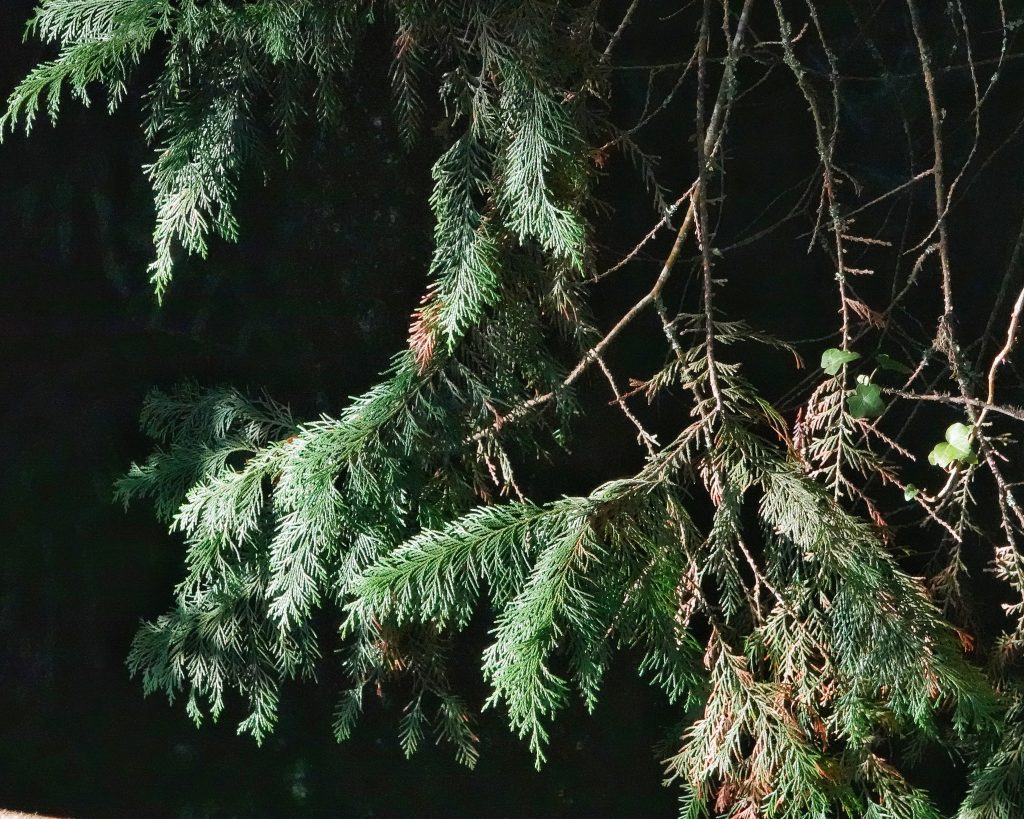
When I first conceived of the trip to sw Oregon/nw California that I wrote about in ‘Pivoting’, I had hoped to find as many as 10 species of conifers that would be new to these profiles. And though I only ended up finding 4, I did find the two that only reach our region in that limited area, the glorious redwoods and the beautiful Port Orford-cedar, both of which were abundant. I had been concerned that the superficial similarity of Port Orford-cedar to western red-cedar (Thuja plicata) would make it difficult to distinguish between them at highway speeds, and that I’d have to rely on luck to find some that had branches that reached near the ground in places that I was walking. However the first clump of cedars I saw after turning onto Hwy 197 from Hwy 101 had a convenient pulloff, and several of the trees turned out to be unmistakably Chamaecyparis lawsoniana. And in fact the only place that I actually found Thuja plicata and Chamaecyparis lawsoniana in relative proximity was in Jedediah Smith Redwoods State Park. I would guess that that juxtaposition is more common than what I encountered, but the ranges of the two species only overlap in a limited area.
For those curious about my absence, and the change in the form of these profiles, please see my recent blog ‘Equinoctial evaluations’.
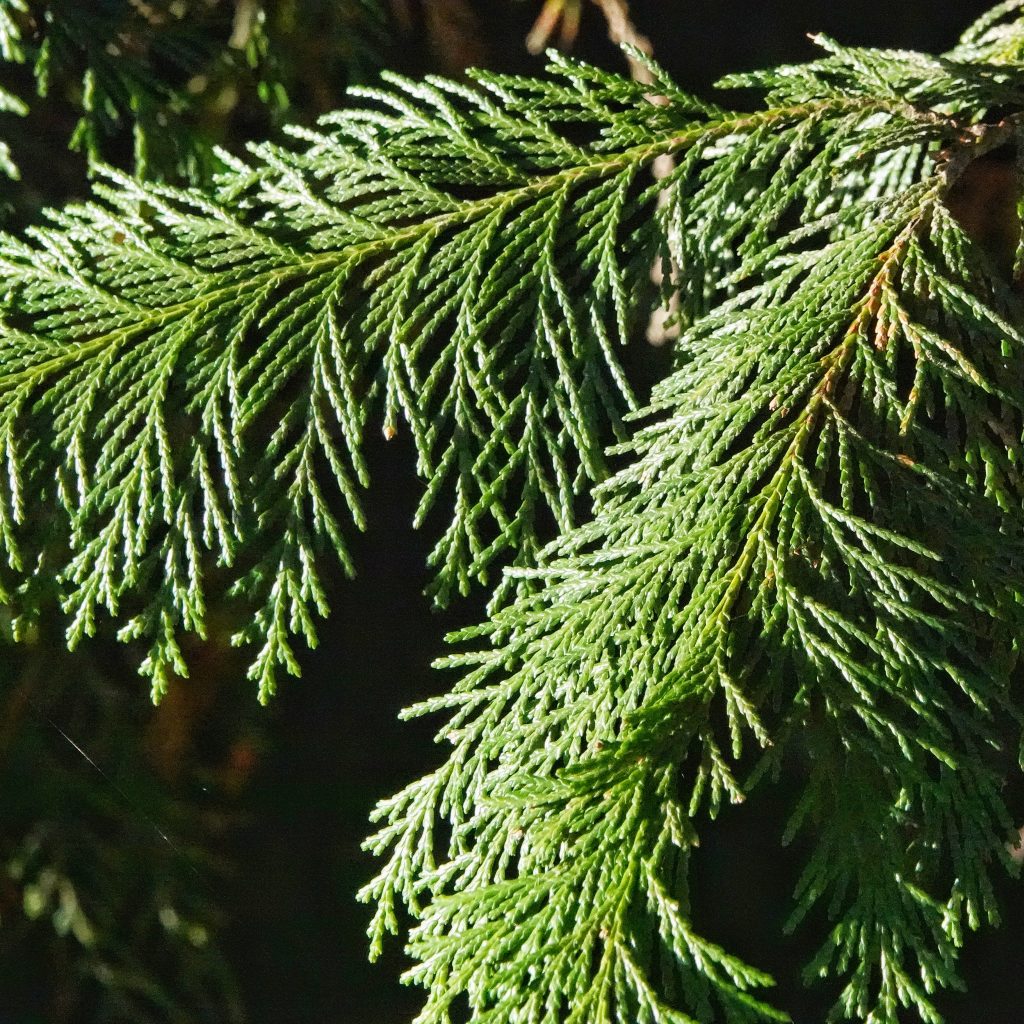
Where the two species do occur together it is actually quite easy to tell them apart, as long as one can see the leaves. For while both of them have stubby (1/8-1/4”) flattened leaves which make the branchlets appear dense, the stomatal bloom on the underside of Port Orford-cedar branchlets forms an X pattern, whereas the stomatal bloom on the underside of Western red-cedar is broader and forms a sort of butterfly shape. Port Orford-cedar also overlap with incense-cedar, especially in the Smith River National Recreation Area along Hwy 197, but they are not difficult to differentiate because incense-cedar has long (1/4-1/2”), scale-like outer leaves that form a wineglass pattern and give a long, thin, sparse, rounded appearance to the branchlets.
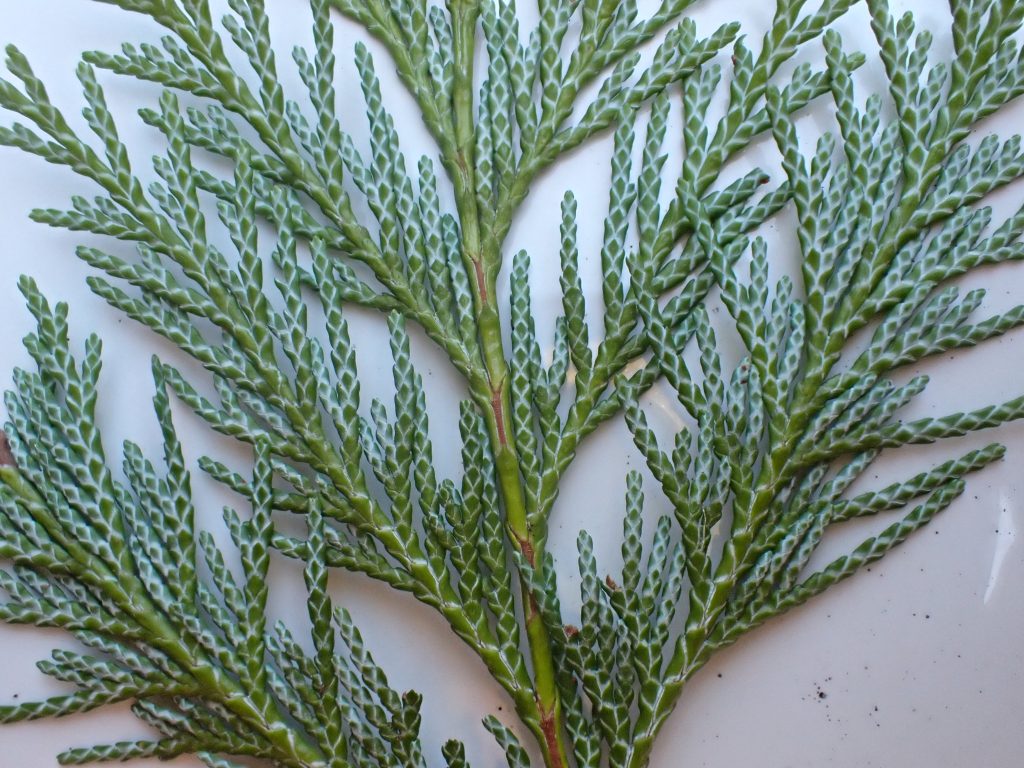

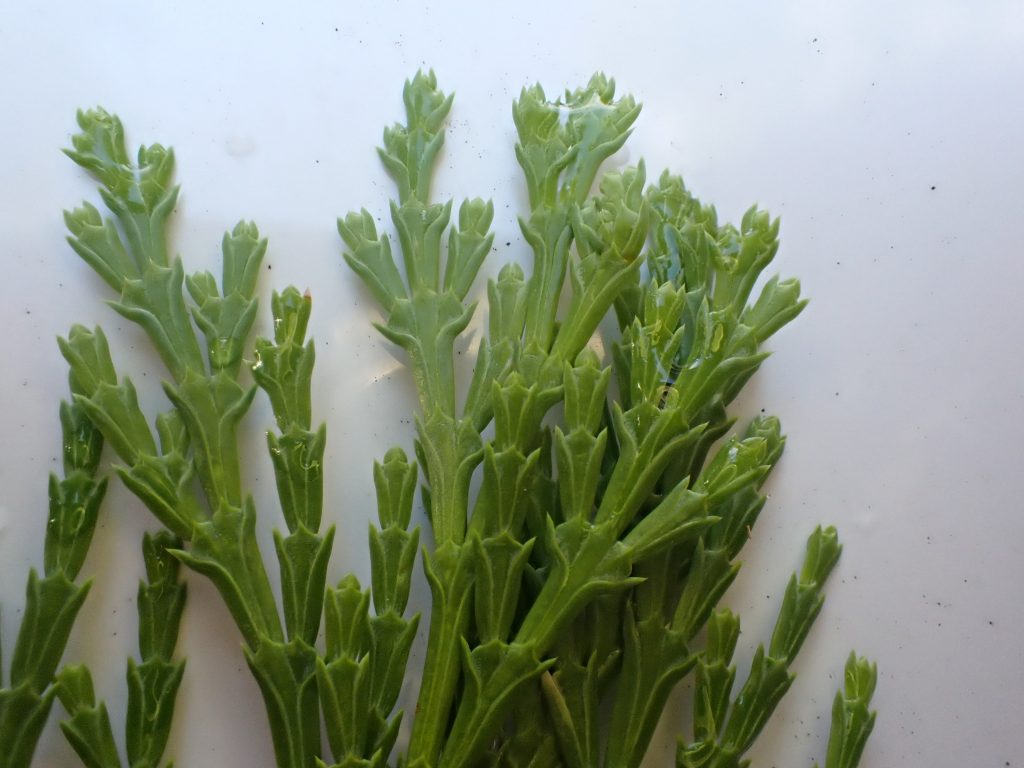
Indigenous peoples primarily used this tree for its wood, and didn’t seem to have food or medicinal purposes for it, although Yurok children did throw the cones at each other for sport (Native American Ethnobotany Database). Port Orford-Cedar is still commercially harvested, and is “…also a highly desirable and valuable timber tree, especially in Japan, where it is used to construct coffins, temples, and fine homes. The wood is light, strong, fine grained, and aromatic, which makes it insect resistant. Port-Orford-cedar has been used in the manufacture of Venetian blind slats, storage battery separators, sashes, doors, interior finish mill work, hope chests, matches, dock planking, and a host of other wooden things, including posts, flutes and other musical instruments, arrow shafts (manufactured in Myrtle Creek, Oregon), boats, and woodcarving. Soap and insect repellent are made from the volatile oils of the wood.”, as well as being used horticulturally, since “more than 200 cultivars are used for bonsai, hedges, and more”; Frank A Lang, Oregon Encyclopedia
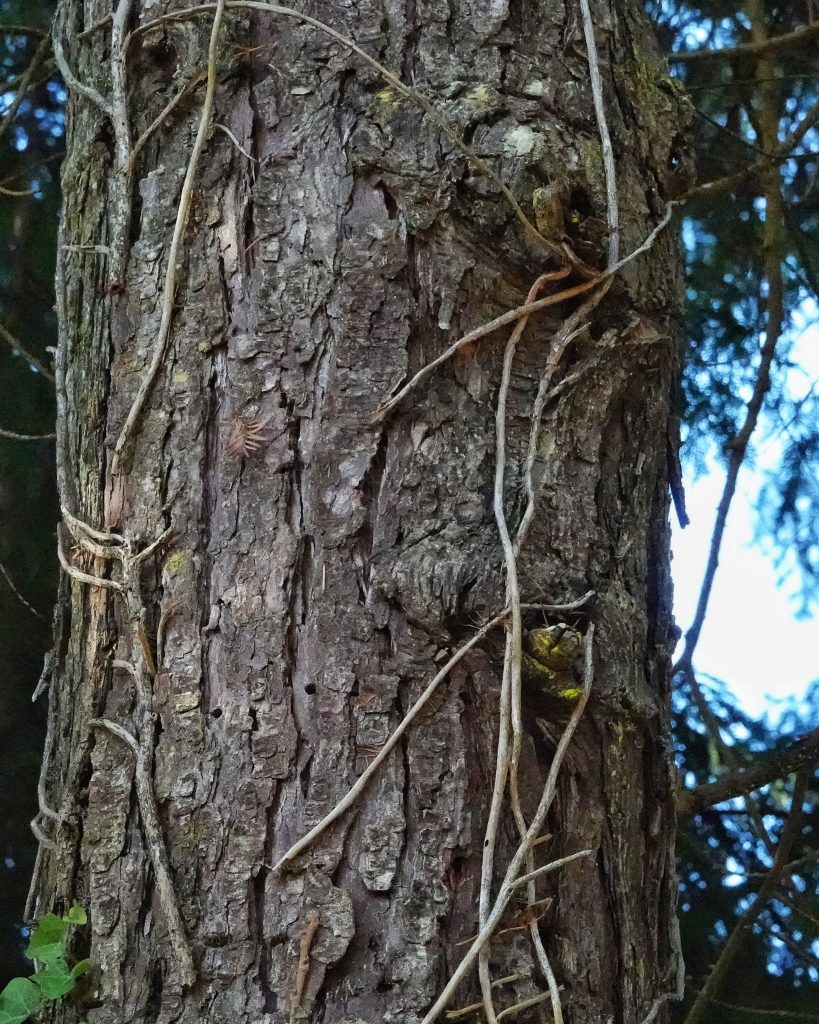
“In 1952, a root disease called Phytophthora lateralis was introduced into natural stands and has lead to significant mortality of this species throughout its range. There are but a few remaining sub-watersheds that are currently uninfected. Phytophthora lateralis primarily spreads by spores in water coming into contact with the root system of Port-Orford-cedar. Once introduced into a stream system or other water body and root contact is made, the disease spreads rapidly.Spores are transported in mud on vehicle tires, on the undercarriage of vehicles, boots, bikes, and other equipment from infected areas to uninfected areas.” Port-Orford-Cedar Conservation, Forest Service website.
Besides the websites directly cited and linked, the Forest Service’s FEIS entry for Chamaecyparis Lawsoniana by Leila Duchac is also an excellent source for ecological information on this species.
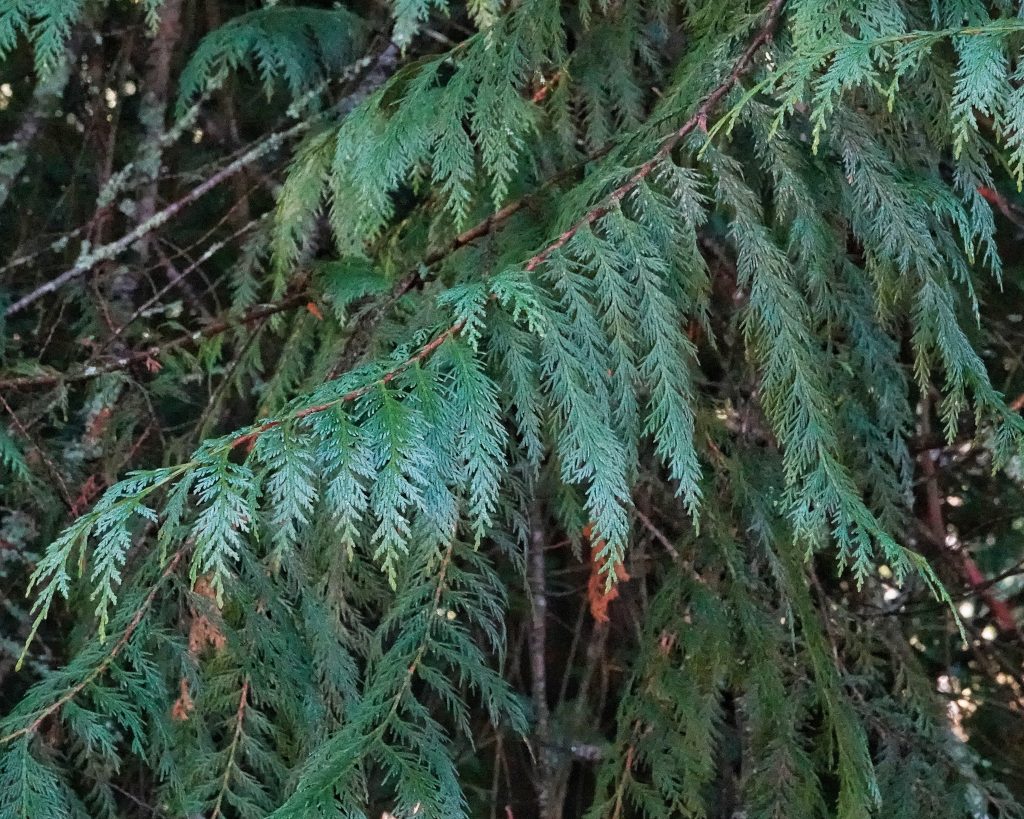
Description-“Trees to 50 m tall and 300 cm dbh. Bark reddish brown, stringy, 10-20(25) cm thick on old trees (1-2 cm thick on trees less than c. 100 years old), divided into broad, rounded ridges. Branchlet sprays predominantly pinnate. Leaves of branchlets mostly 2-3 mm, apex acute to acuminate, facial leaves frequently separated by paired bases of lateral leaves; glands usually present, linear. Pollen cones 2-4 mm, red to purple; pollen sacs red. Seed cones maturing and opening in 6-7 months, 8-12 mm broad, glaucous, purplish to reddish brown, not notably resinous; scales (6)8-10, the apical pair fused. Seeds 2-4 per scale, 2-5 mm, wing equal to or broader than body. Cotyledons 2”; Gymnosperm Database
Similar species– For western red-cedar and incense-cedar, see above; Callitropsis nootkatensis (Alaska-cedar) lacks stomatal bloom on the leaves and has round cones with points on them; junipers and cypress in our region have round to 4 sided groupings of leaves about the stem.
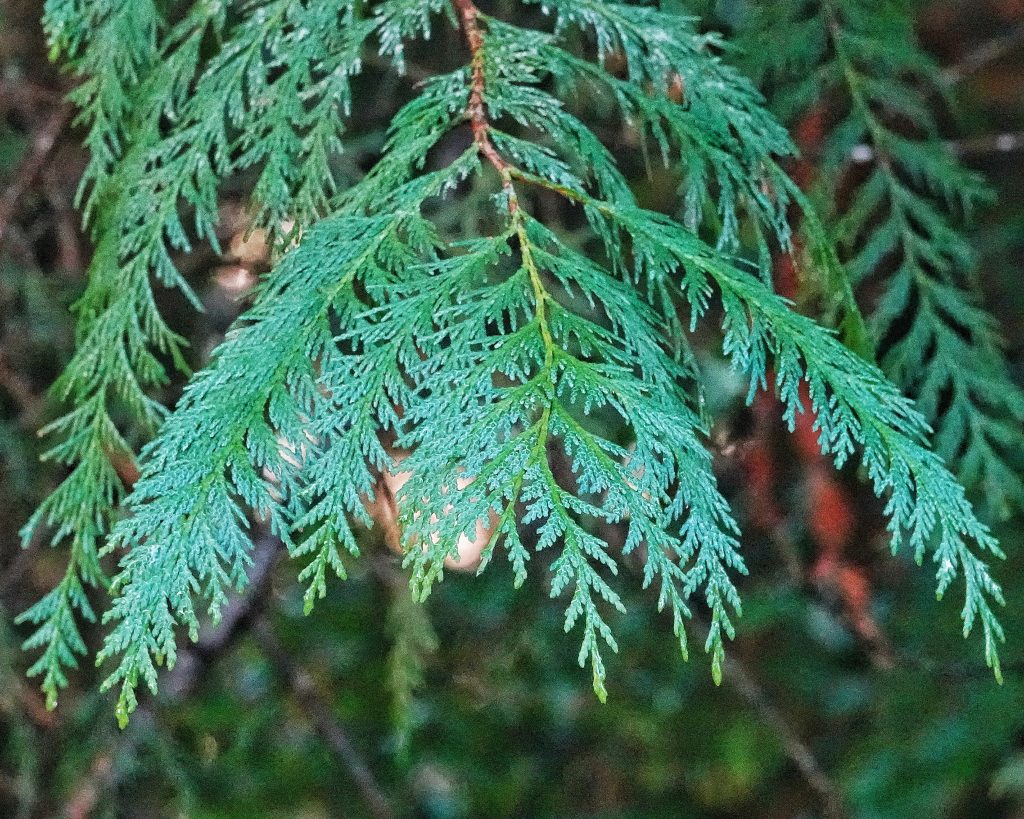
Habitat-“Inland, Port-Orford-cedar grows in the margins of fens and riparian zones with serpentine soils. Coastal populations grow in deep soils with a variety of other conifers”; Frank A Lang, Oregon Encyclopedia
“Port-Orford-cedar usually grows on concave or sheltered slopes where soil seepage occurs. It is most common on slopes, on benches, and in drainageways. Restriction to streamsides and ravines is most obvious inland at low elevations. Stands are most common on northwest, north, and northeast aspects, especially at lower elevations. Port-Orford-cedar grows from just above sea level to about 1500 m (4,900 ft) in the main section of the range, and to 1950 m (6,400 ft) near Mount Shasta. Port-Orford-cedar is found with an extremely wide variety of associated plants and vegetation types. It usually grows in mixed stands and is important in the Picea sitchensis, Tsuga heterophylla, mixed evergreen, and Abies concolor vegetation zones of Oregon (3,13) and their counterparts in California (1). It also grows in a variety of minor communities from dry sand dunes to Darlingtonia (cobra-lily) bogs. The species reaches its greatest size and commercial worth in the dense, rapidly growing forests of the Picea sitchensis and the Tsuga heterophylla zones, in which Douglas-fir often dominates. Port-Orford-cedar is most dominant on wet soils, most of which have parent material at least partially ultramafic, in the high elevation Abies concolor zone where forests are dense but slow growing (13). In the mixed evergreen zone, it is the only shade-tolerant conifer in most stands. On drier sites on ultramafics and in bogs, forests can be very open and slow growing”; Donald B Zobel, Sylvics of North America, Vol 1-Conifers
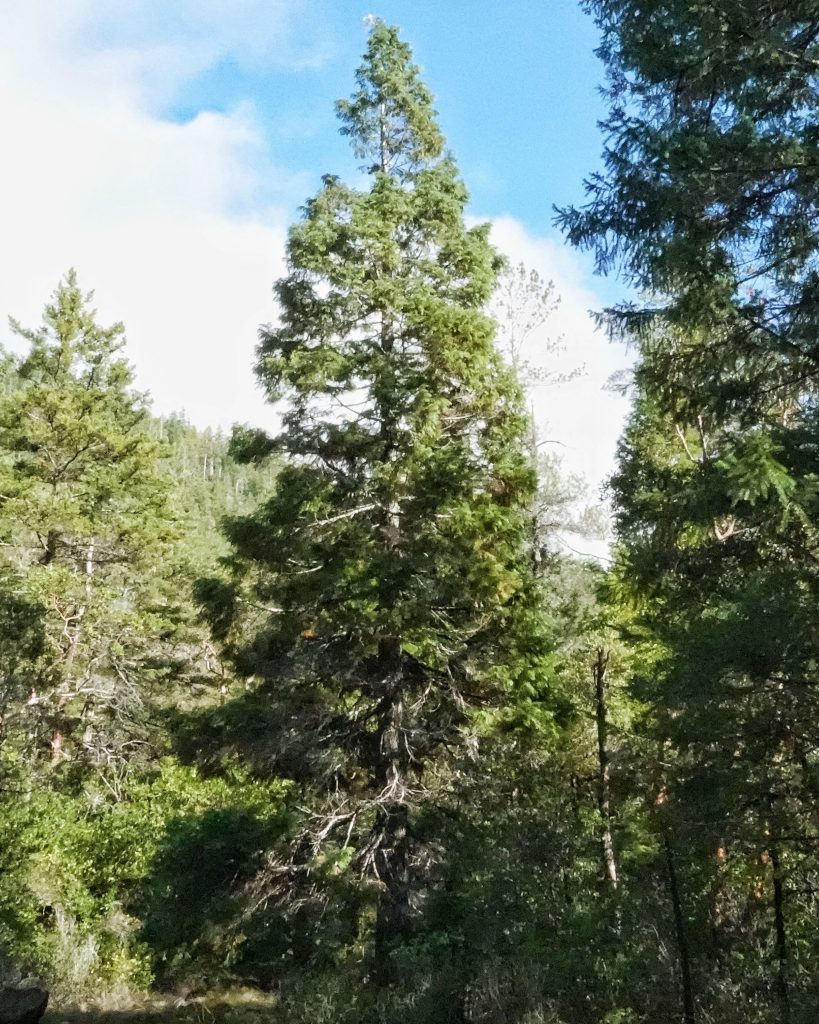
Range-Native range is sw Oregon and nw California, and it is most common in the Coast Range in Coos and Curry Counties in Oregon, but these trees are planted as ornamentals, and this has resulted in some wild populations outside of their native range.
Eaten by-Douglas squirrels store Port-Orford-cedar cones and consume the seeds; rabbits and Aplodontia (mountain beaver) sometimes eat the foliage of saplings; woodrats and porcupines consume the bark; larval host for the moths Neoalcis californiaria, Argyrotaenia franciscana, and Epiphyas postvittana; adults and larvae of the introduced shield bug Cyphostethus tristriatus, the shield-backed bug Stethaulax marmoratus, and the stink bug Banasa euchlora; dead and dying trees are used as a larval host by the longhorn beetles Stenopotes pallidus, Semanotus japonicus , S. laurasii, Prionoplus reticularis, Phymatodes (Phymatoderus) glabratus, Oemona hirta, Eburilla sericea, Callidiellum rufipenne, Blosyropus spinosus, Ambeodontus pilosus , A. tristis, and Agapanthida pulchella.

Reproductive timing-“Pollen and seed cones develop on the same branches of this monoecious species. Reproductive organs are initiated in late spring or summer. They soon protrude beyond the surrounding leaves, and development continues through the summer. The bladderless pollen is formed in late winter in the bright red pollen cones; on the Oregon coast it is shed about mid-March. Fertilization occurs a month or more later, and seeds mature in September or October of the same season. Each fertile scale of the 7 to 10 scales in the globose cone usually bears 2 to 4 seeds. Cones contain about 20 percent of their weight in seeds…Seed production starts when the tree is 5 to 20 years old”; Donald B Zobel, Sylvics of North America, Vol 1- Conifers
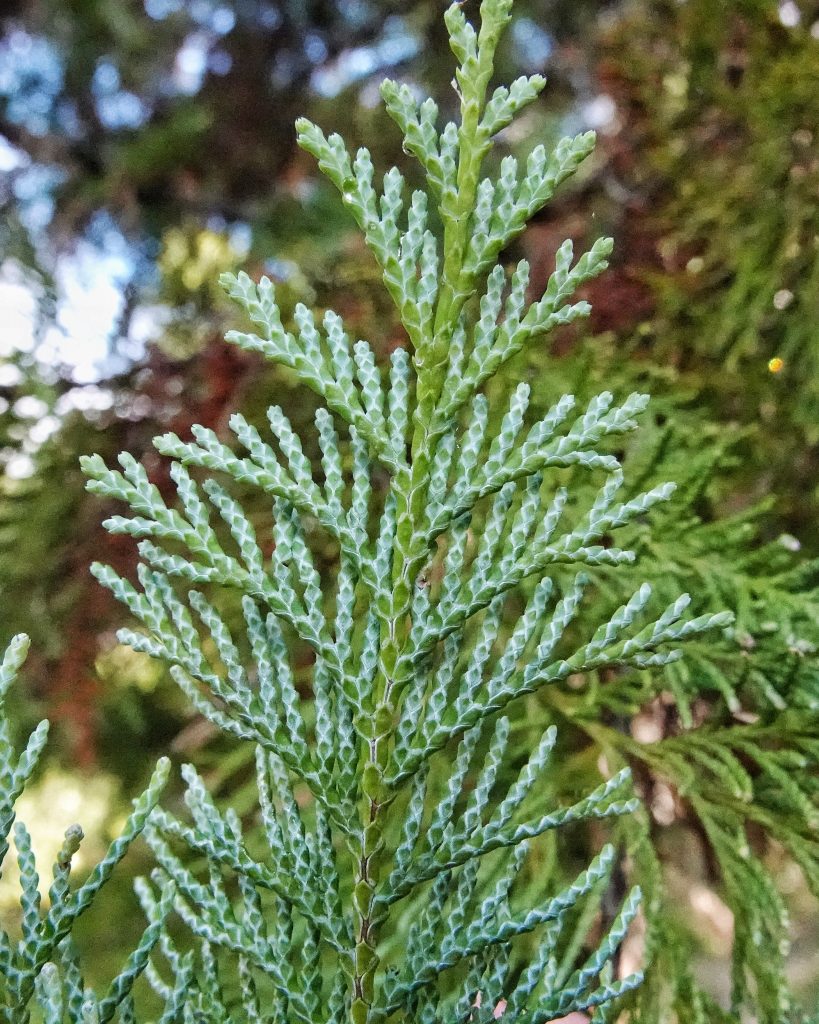
Etymology of names– Chamaecyparis is from the Greek words for ‘on the earth’ and ‘cypress’. The specific epithet lawsoniana pays homage to Charles Lawson (1795-1873), a Scottish nurseryman who promoted the tree as an ornamental. Port Orford Cedar refers to the location of the type species.
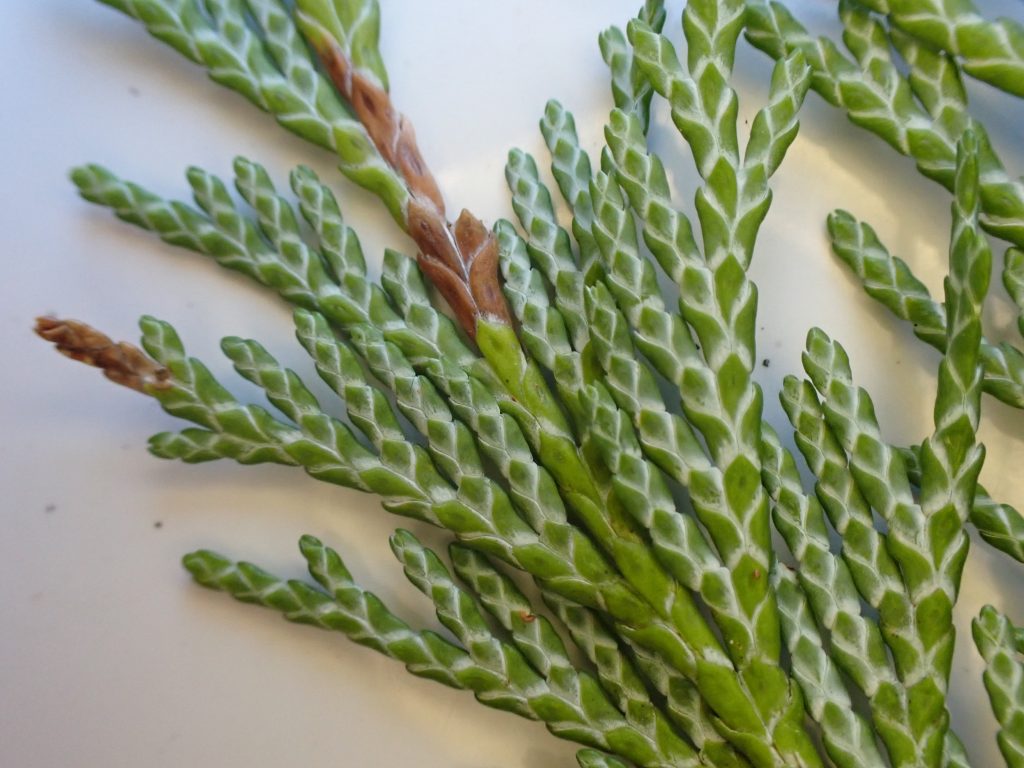
Chamaecyparis lawsoniana (Port Orford cedar) description
BRIT – Native American Ethnobotany Database
OregonFlora Chamaecyparis lawsoniana
https://www.indefenseofplants.com/blog/2018/9/25/the-only-true-cedars
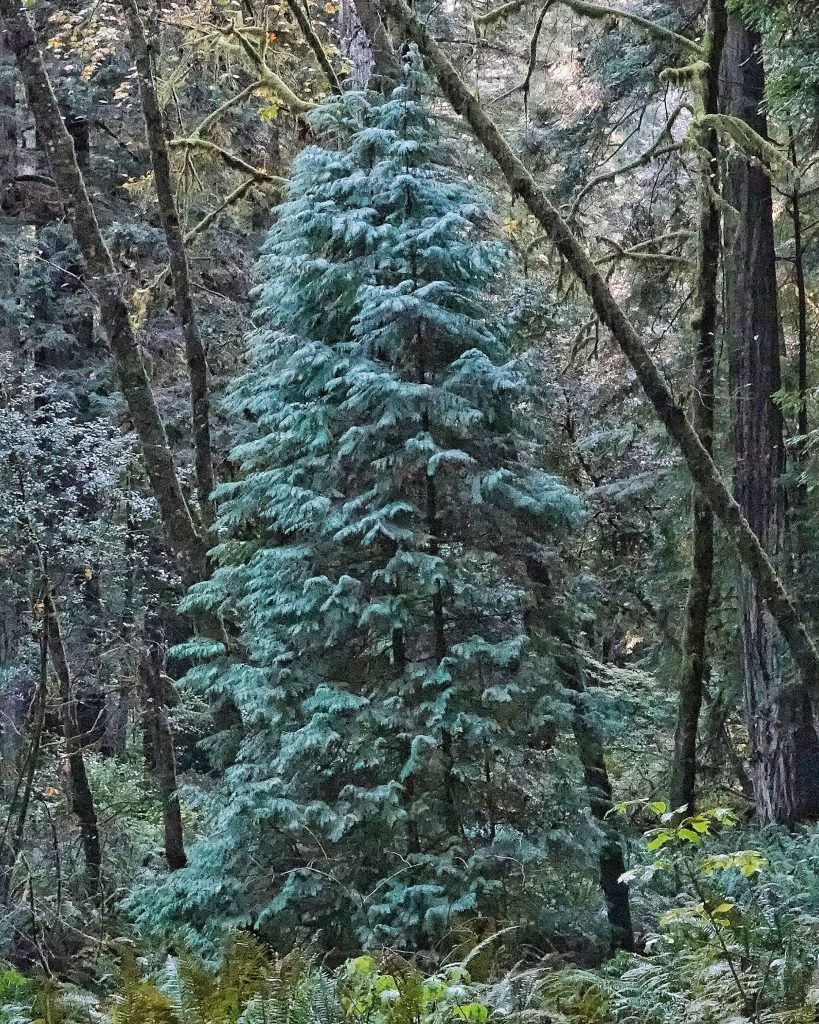
Dan,
I wonder if you would consider including in your sections on etymology, something about the names in native languages.
Thanks
Garet Munger
That would be a nice addition, Garet, and I’ve looked into that, but there is no centralized database that I can find that shows what each of the dozens of tribes in our region called these plants and animals, and my interest in it hasn’t been great enough to engage in the acts of scholarship required to find these things out. If this is of interest to you perhaps you could share with me your resources, or just tell us in a comment the names the indigenous folks used.
Except for Gunther’s “Ethnobotany of Western Washington”, my other 3 Ethnobotany books don’t list the indigenous names for plants. But I did include Gunther’s renditions of native names in an upcoming profile.